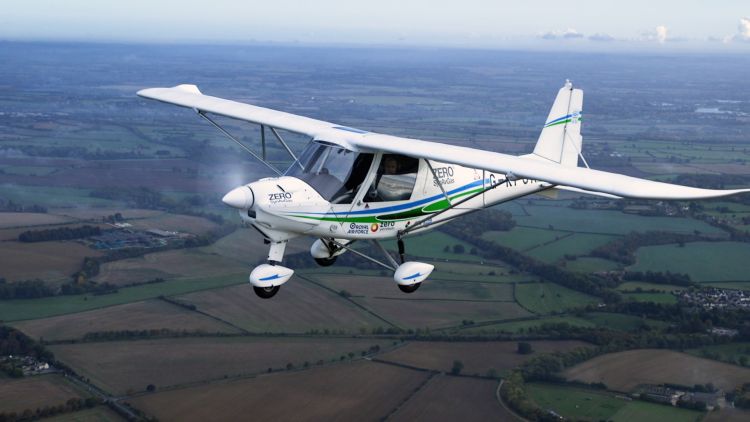Climate Warriors: RAF in race to cut emissions and carbon footprint
RAF, the largest CO2 emitter in defence, has committed to achieving net-zero by 2040 – ahead of the UK Government's 2050 target.
22 February 2022
Step inside RAF Leeming's technology hub and it feels more like Silicon Valley than an air station. With its orange seats and graphic covered walls, this is the air force's 'Living Lab', the place where military and academic minds meet as part of something called Project ViTAL.
Leeming has teamed up with Newcastle University, allowing its scientists access to the base to conduct experiments into six different areas of green technology, from hydrogen-powered vehicles to geothermal energy.
Leeming has teamed up with Newcastle University, allowing its scientists access to the base to conduct experiments into six different areas of green technology, from hydrogen-powered vehicles to geothermal energy.
The aim: to make Leeming the RAF's first carbon-neutral station by 2025.
"That's a very tough challenge when you consider the rest of the country is focused on 2050 and the rest of the air force is focused on 2040," said Group Captain (now Air Commodore) Blythe Crawford, a former Tornado navigator and, until recently, the station commander. "But we have set ourselves that goal and we're very fortunate enough to have some of the country's best academics supporting that endeavour."Leeming already has a fleet of electric vehicles, and the Ministry of Defence's first privately run 5G network. It provides a high-speed 'internet of things testbed', allowing the base to connect a large array of energy sensors and monitor its CO2 output remotely.
"That's a very tough challenge when you consider the rest of the country is focused on 2050 and the rest of the air force is focused on 2040," said Group Captain (now Air Commodore) Blythe Crawford, a former Tornado navigator and, until recently, the station commander. "But we have set ourselves that goal and we're very fortunate enough to have some of the country's best academics supporting that endeavour."Leeming already has a fleet of electric vehicles, and the Ministry of Defence's first privately run 5G network. It provides a high-speed 'internet of things testbed', allowing the base to connect a large array of energy sensors and monitor its CO2 output remotely.

Dr Oliver Heidrich, the scientist leading the experiments, said they wanted to find solutions that work in a military environment: "We're not just conducting research that's in the lab in our university, we're doing it on the ground, in situ, and that's really ground-breaking. That has not happened before," he said.
Dr Elizabeth Gibson is using nano-technology to research and develop a new type of solar panel that is ten times thinner than a human hair. It can be applied to walls like paint, even printed onto fabric using nothing more than an ordinary t-shirt printer.
"We can just print these, which means we can create huge quantities very easily," she explained. "We can print them onto plastic, onto metal foil, and we've done some work on fabric as well. They're really flexible."
Geothermal energy – the heat stored within the earth – is another area they are exploring here. Geo-science lecturer Dr Mark Ireland is using Leeming to develop new seismic sensors that can detect hot water deep below the ground, the sort of water seen in Roman baths.
"The UK isn't on an active plate boundary, and we don't have lots of volcanos, but as you go deeper it gets hotter and the water also gets hotter," he explained. "We're looking to see how we can exploit to a much greater degree, that heat beneath the earth."
As well as these experiments the team have converted one of Leeming's aircraft tugs to run on hydrogen. What is unusual is that the fuel can be deposited in the existing fuel tank. "We're running hydrogen directly in the engine as if it's petrol," said Professor Phil Blythe, a former Chief Scientific Advisor for the Department of Transfer, and now a lecturer at Newcastle University.
"They've done some clever stuff with the engine so there are no harmful emissions coming out of the tailpipe. That's the really unique thing here."
Sorry, you need JavaScript to view this video
